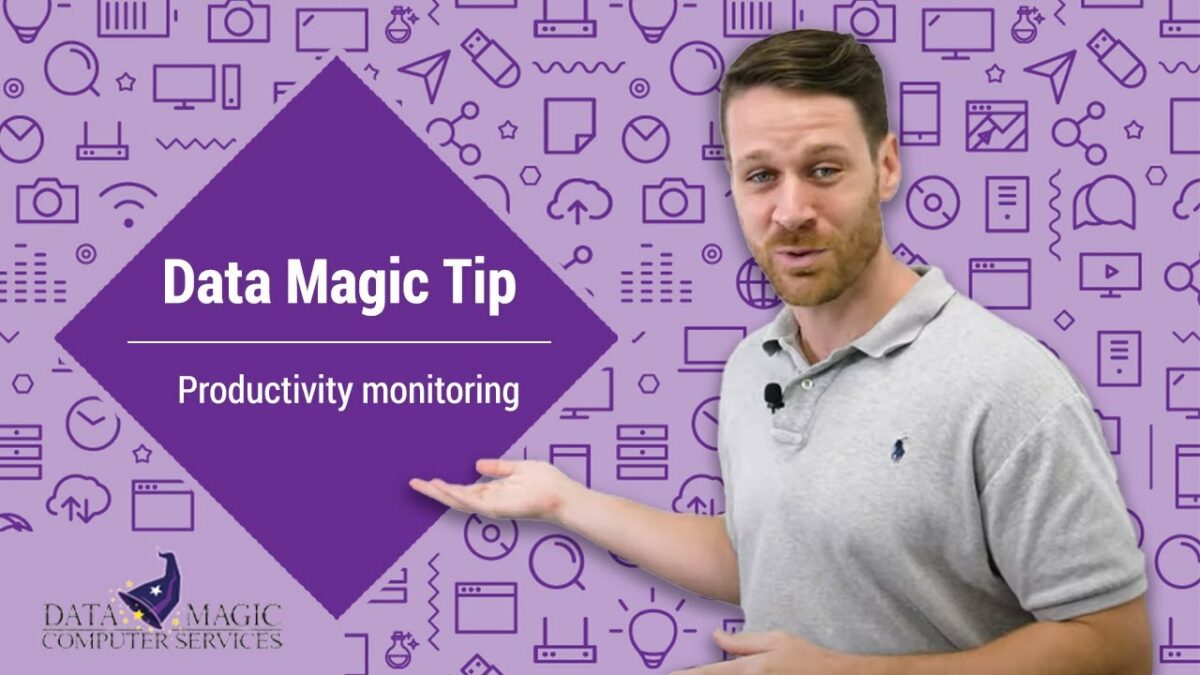Businesses tap the services of outsourced IT support and other trained professionals primarily to save money. Outsourced IT allows you to increase your brand’s competitiveness and broaden your horizons while sticking to a smaller budget. Fifty-nine percent of companies that outsource IT services rather than hire full-time employees to see saving money as their primary motivation. Aside from cost savings, outsourcing IT services can help small business owners improve their productivity and security. When you form an alliance with a team of outsourced IT professionals, you should aim for a long-term relationship. That’s why it is crucial to do some due diligence and choose the right IT partner.
What is Outsourced IT Support?
When it comes to virtually any type of business in the world, technology is a critical part of operations. You need technology for your employees and daily operations: computers, printers, copiers, adequate data storage and backup, unique software programs, and more. In addition, everything must be protected with excellent cybersecurity. All of these things encompass your business’s IT services or information technology services. Most businessmen and women start their businesses with the mind that they can do anything they set their mind to. While this is an excellent mentality to have and provides the necessary motivation to start a booming business, it’s also important to know when to ask for help.
Nowhere is this more pertinent than with information technology, or IT. Unless you are specifically in the business of providing information technology yourself, this means you’ll have to have a strong team of IT specialists on your side. In-house IT departments are generally only a viable option for expansive businesses that will have enough work for the IT staff to do on a daily basis. Therefore, the better solution for most companies is to hire a managed service provider or MSP. These companies provide all different levels of IT support to their customers (businesses and organizations like yours). Their main goals are to make your life easier and to help your business grow and thrive.
Benefits of IT Sourcing
Outsourcing your company’s IT needs to a managed service provider offers a host of benefits. At the top of the list, outsourced IT providers reduce your in-house staffing burdens and payroll costs while providing your company with the most qualified and experienced experts in the industry. However, that’s certainly not the only advantages these tech partners provide. Here’s a look at some of the top benefits of working with outsourced IT services.
1. Access to the Best Talent Pool and Technology
Professional IT companies handle technology all day. All specialists working at outsourced IT services are trained in their specific area of tech, and they stay updated on the latest in cybersecurity, technological hardware and software advances, updates to data cabling practices, and more. Moreover, whenever you need updated software or hardware, they know the most effective and affordable options.
2. Choose Your Level of Service
Most IT outsourcing services offer different tiers of service. You choose your level of service and pay a flat, monthly, quarterly, or yearly fee for them to provide whatever services are in that tier. Sometimes, businesses simply hire them to be “on-call” when they need them. Because of this, you can basically pay for exactly what your business needs. If you own a large business and constantly need IT service assistance, choose a more hands-on level of service. If you only occasionally need help with an IT problem and generally just need someone to help you hook up new computers, networks, or equipment from time to time, choose a lower tier of service. You can also change levels of service, based on your changing needs.
3. Reduced Costs Across the Board
Outsourced IT services only work when you need them, so you’re paying for what you need and not for downtime. It can be expensive to hire, train, and consistently employ an in-house IT team. Moreover, in small and mid-sized businesses, these staff members generally have a lot of downtime. Hiring them makes more fiscal sense in the long run, and you’ll undoubtedly get better service.
4. No Need to Manage an IT Team
In many cases involving an in-house IT department, it’s the manager or director who is taking care of the tech team and micro-managing their day-to-day tasks. This leaves little time to actually run the business. With outsourced IT, they will take care of your needs. The whole point of hiring managed IT service providers is to lessen your workload and anxiety. You should be able to hand over the “tech reigns” to them and let them keep your business in a continuous flow of utility, without hitch or interruption. This is what they’re trained to do without your involvement.
5. Improved Compliance
Meeting compliance is a major pain point in many industries. Government rules and other regulations are complicated and always changing. An outsourced IT support can take on this burden for you and set you up with the software you’ll need for perfect compliance and greatly improved risk management.
6. Less Security Risks
A large part of an outsourced IT’s role is to be aware of current cybersecurity threats. With many businesses and organizations, personal and private data is being stored. In the event of a security breach, this data could be stolen, destroyed, held for ransom, or otherwise tampered with. If it is employee data, a breach like this could mean loss of faith in the company and even lawsuits. The same goes for loss of client and customer data — or patient data in the case of health care providers. In these situations, whole businesses can collapse. Fortunately, cybersecurity is best handled by professionally managed service providers. These experts know the current strategies hackers are using to obtain login information and sensitive data. They will construct a thick barrier between you and any potential threats. Moreover, they’ll be monitoring your security 24/7, so if something does happen, they can nip it in the bud as soon as possible. They can also provide cybersecurity training to your staff.
7. Increased Efficiency
Outsourced IT experts don’t just react to disasters, ranging from viruses to unexplained downtime, to malfunctioning software. Rather, they help you avoid these disasters. As a result, instead of wasting hours and dollars cleaning up a mess, your company pays a predictable subscription fee, and they take proactive measures to ensure your tech is working smoothly. In addition, outsourced IT services boost your company’s efficiency by helping you leverage your tech tools to the best of their capacity.
8. Faster Implementation Time
In addition to leveraging existing tools, they allow you to implement new tools faster. Rather than waiting as your in-house staff researches new tech tools, you simply tap into the expertise of your managed IT services. While your in-house staff often would be starting from scratch, an outsourced IT has likely solved that problem or a very similar one in the past, and they can bring that experience to your situation. In addition to cutting down research time, an outsourced team of IT professionals know how to implement programs and equipment quickly. They can customize the solution to your company’s unique needs and then train your staff on how to use the tools, eliminating a painful learning curve or the inefficient use of new tech.
9. Levelling the Playing Field
Working with an outsourced IT services company gives you a competitive edge over similar-size competitors who may not be leveraging their tech tools to their full capacity, but your company’s relationship with a managed IT service provider can take you a step further as well. In essence, an MPS levels the playing field, and it expands your pool of competitors by giving you access to the tools used by large companies, scaled to your needs. That simultaneously increases what you can do and the image of ability you can present to your clients, helping you soar above the rest of the pack.
Should You Simply Manage IT Yourself?
We don’t recommend that. Again, entrepreneurs and leaders in business are unique creatures in that they genuinely feel that they can accomplish anything they set their minds to. We’ve already covered why this is absolutely excellent for getting great business ideas, bringing them to fruition, and creating businesses that thrive and grow. But at certain times, it is critical that you release the mentality that you should handle it all. As an owner or manager, you simply don’t have time, and your talents and abilities should be put to better use than managing IT. While we will assert time and again that information technology is absolutely essential to your business, it is crucial that you find the best-managed service provider to assist you in handling your IT. Do what you’re best at and leave the IT to MSPs.
Cost Associated with Small Business IT Support
One of the most significant challenges small and medium business owners are facing is deciding about IT support and the maintenance of their IT infrastructure. It’s a battle between hiring a full in-house department or outsourcing IT services for their business. Because hiring an entire internal IT team is an extravagant affair, most companies are turning to outsourced IT support providers. Outsourced IT support falls under two categories:
- Fully Outsourced IT Support: This type of IT support is suitable for companies that do not have a stable IT department. Your company will delegate its entire IT department to the outsourced IT team.
- Partially Outsourced IT Support: This is suitable for companies that already have existing IT personnel and want specific IT needs to be met. Your company controls the services that the IT support firm will provide and when they will be provided. In such arrangements, the IT company is usually tasked with filling IT expertise gaps in the company and performing complex tasks that the in-house team cannot complete.
For any company looking to outsource IT services, the cost of these services ranks among their top considerations. How much should you pay for managed IT services? Outsourcing IT support is deemed cost-effective because of the expertise, years of experience in tech, and the services that will be provided by the external team. But what Is the price behind being cost-effective? The cost of outsourced IT support can vary significantly due to several factors:
- The type of IT support you want; partial support or fully managed
- The location of your company
- Your exact business requirements
- The level of expertise you desire
- The state of your IT infrastructure
Business owners find it almost impossible to know how much IT support should cost as most managed service providers do not provide this information on their websites. When they make calls to different managed service providers, they realize that pricing is not uniform. These different pricing structures can be very frustrating as there is no online catalogue to choose from or a one-price-fits-all formula. Below are the most common pricing structures implemented by outsourced IT companies:
Managed IT Services Pricing Models
So, exactly how much should you expect to pay for IT support? There are six famous managed IT services pricing models that you can review as your starting point. The section below describes each pricing model and its attributes. All of them have advantages to offer companies, but there must be a close relationship between what the model provides and the IT needs of your company.
- Monitoring-Only Pricing Model: the monitoring-only pricing template provides system monitoring and notification. In this case, multiple different service levels may be adopted. For example, an IT company may be allowed to charge for additional compensation activities identified through remote monitoring. This pricing model may apply to companies that are typically offered services such as; antispam and antivirus updates, backup monitoring, disk optimization, operating system services for a flat monthly fee.
- The Per-Device Pricing Model: The premise of the per-device pricing template is to develop a fixed rate for every type of gadget that is supported in the client’s environment. The benefit of this pricing model compared to other managed IT services pricing models is that it simplifies the pricing format for your services and makes it easier for potential clients to give quotes and for MSPs to demonstrate costs for prospects. It also makes it easier for the IT company to change the monthly service fee as the client adds devices.
- The Per-User Managed Services Pricing Model: The per-user pricing model is somewhat identical to the per-device pricing template. The distinction is that the fixed fee is billed per end-user monthly and comprises support for all gadgets used by each end-user. These devices include laptops, office PCs, smartphones, tablets, and any other gadget that the company might use.
- The Tiered Pricing Model: It is the most famous pricing model used by managed service providers. The principle is to build multiple bundled loads of services with each progressively costly service providing more services to the client company.
The tiered pricing model provides the IT company and your company as the client the flexibility needed to implement a comprehensive managed IT solution.
- The All-You-Can-Eat Pricing Model: The all-you-can-eat pricing template is very alterable and comprises on-site support, remote services, and bench and laboratory time for an entire company at a fixed fee monthly. It also provides all-year-round services or support during specific hours or days of the month and bills extra charges for services provided outside these hours.
The main aim of this model is to provide the client with the capability to budget for their IT support costs.
- The a La Carte Pricing Model: In the a la carte pricing model, the IT company provides services that address the particular needs of the company. These services could include data backup and disaster recovery and patch management. This pricing model gives clients the capacity to choose and pay only for the services they require. It also allows them to construct a customized package of IT solutions for their company.
Technical Support Offshore vs. Domestic
When considering the cost of your outsourced IT support, the location of your would-be partner’s matters. A domestic technical support team, for example, consists of IT professionals located in the same country where your business is headquartered or located. On the other hand, an offshore outsourced IT service will be located in another country, as the name suggests. You have to weigh the pros and cons of hiring either offshore or domestic technical support. Either way, these outsourced IT professionals will help free your team from IT duties, allowing your people to focus on their core skills to help achieve your brand’s goals. Below are several factors you should consider when hiring offshore or domestic IT support:
1. Cost
Whether you’re tapping the services of a domestic or offshore outsourced IT support, there will be considerable savings compared to running an in-house IT team. Outsourced IT teams can handle your inquiries and technical support requests even after office hours, so your operations will not be disrupted. Offshore teams may offer greater savings than domestic teams, although costs for these services have increased in the past years.
2. Regulatory Concerns
Outsourcing a portion of your business may be subjected to certain laws. It is generally easier to tap domestic technical support services, considering your business already follows existing local, state, or federal legislation. With offshore teams, you need to ensure compliance with the other country’s existing rules and be alert for any changes.
3. Staff Turnover
When you hire outsourced IT support, they practically become extended staff for your company. With domestic technical support professionals, you will often be assigned a dedicated contact person who knows your business well and keeps track of your specific IT issues. On the other hand, offshore teams that offer lower employee wages and manage numerous accounts will most likely distribute the workload. This means that the service level might vary or suffer, depending on who handles your requests.
4. Cultural Differences
Outsourcing companies, whether domestic or offshore, provide proper training to their staff. However, some cultural disconnect might be experienced with offshore teams. Another issue will be the language difference, where dialects may affect the quality of interaction. The dialect issue may also be true for domestic IT support teams.
5. Advanced Skills
The demand for advanced technical and digital skills has stripped many off-shore locations of available talents. Existing talent pools may demand higher prices, which negate the cost benefits of outsourcing offshore.
6. Intellectual Property and Customer Data Protection
Safeguarding intellectual property and valuable customer data is a top priority for any business. When outsourcing to offshore teams, data can become more vulnerable to theft and potential unlawful distribution. While these managed service providers will ask their employees to sign NDAs, the legal systems will vary from country to country. Onshore teams may benefit from the tried and tested legal framework and enforcement in the United States when it comes to intellectual property protection. When looking for reliable IT outsourcing services, it is crucial to consider these factors. At times, a hybrid of onshore and offshore teams might be beneficial.
7. New Outsourcing Trends
In a recent survey, businesses still see outsourcing as an enabler for transformation, but companies cited other factors when hiring outsourced IT services. Businesses are now looking into disruptive technologies such as cloud, automation, and microservices.
- Cloud: Roughly 68 percent of industry leaders now employ cloud platforms as digital enablers. This allows easier access to much-needed applications, whether hiring offshore or onshore IT teams. The primary concern with cloud technologies is still data security. However, none among those surveyed worry about the performance of public or private clouds.
- Automation: With advancements in automation and AI, companies adopting such technologies allow businesses to explore new operating models and gain advantages over competitors who hesitate to embrace automation.
- Microservices: More and more IT outsourcing providers are introducing microservices and solutions. These services can be turned on or off depending on the needs of your business. Within changing business landscapes, such features provide great flexibility. Businesses also see microservices as a key to simplifying their operating environments.
Your decision regarding outsourcing your IT needs will play a significant role in the resilience of your brand. The impact of global events such as the COVID-19 pandemic cannot be denied. With the challenges of the new normal, outsourcing will be an essential tool for organizations to achieve their strategic goals. If you are considering working with outsourced IT support professionals, we’ve got you covered. Below are things to consider when hiring IT outsourcing services.
7 Things to Look for with IT Support Outsourcing
When technology hiccups result in IT downtime, your business can lose hundreds to thousands of dollars per minute. Some estimate downtime losses from around $5,600 per minute to as much as $540,000 per hour. There are also cyberattacks to consider. If your small business experiences a cyberattack, you may end up dealing with averages damages of up to $1.43 million. Aside from monetary losses, you will also deal with collateral damages. Your brand’s reputation might suffer and your business operations could be disrupted. IT outsourcing services can help you prevent these issues. Here are some things to consider when hiring an IT provider:
1. Level of IT Support Provided
When hiring outsourced IT support, you want to find out what is and is not covered by the contract. Ask questions during the sales meeting that go beyond the basics. Knowing an IT company’s unique selling proposition is nice, but you also want to know their weaknesses, so you can set your expectations realistically. Do they offer managed IT services, cloud services, and cybersecurity, among others? You have to know what’s included. Ask for extra details before signing, because you don’t want to find later on that the services vital to you are not part of the deal.
2. Proven Track Record
Other than deep knowledge of existing technologies, your would-be outsourced IT partner should have experience relevant to the kind of IT support you require. Likewise, the company’s staff should demonstrate outstanding qualifications that fit your needs. If you also have an in-house IT team, you need to make sure that processes will be in place to keep things running smoothly. You can ask the IT outsourcing services company for references or relevant projects they have recently completed. Remember that outsourcing will only be successful if you know your partner well.
3. Up-to-date Infrastructure and Technologies
Technologies continue to evolve, and things get obsolete fast. As a small business, you will entrust some core business services to your outsourced IT. This is why they need to be reliable and able to keep up with the ever-changing business and IT environment. A good outsourced IT service will operate using the latest hardware and software, and invest in upgrading the skills of their team members as needed. They must also have access to the specific technologies that your business requires. Ask whether they work with specific software or hardware brands. While this is not a deal-breaker in itself, it might cause problems later on if they put their vendor relationship above the needs of your business.
4. Good Communication and Client Management System
Whether you’re hiring outsourced IT services right next door, or from the other side of the globe, what’s most important is good communication. Find out how you will get in touch with them when you have concerns or tasks. Access to a client management system also demonstrates the level of maturity of the IT outsourcing services. It shows that the company has defined processes they follow when performing tasks or resolving tasks for you.
5. Guaranteed Response Time
Guaranteed response times go hand-in-hand with good communication.. As a small business, you want things done as soon as possible. Resolving issues within a defined time frame ensures that your business operates smoothly and your customers are satisfied. Guaranteed response times will depend on the level of IT support you are paying for, or the priority level of issues your raise. You need to set parameters to define response times and resolution times.
6. IT Outsourcing Services That Fit Your Budget
Every penny counts when you are a small business or a startup, so what you spend for services must be well accounted for. Ask your potential outsourced IT partner about fixed project costs or a pay-as-you-go setup to find out which type of budget suits your situation. Ask if they will bill you monthly, quarterly, or yearly, so you can budget accordingly. Inquire about discounts if you have an internal IT team who will work with them.
7. Size of Team and Number of Clients
Your IT support will likely be co-managed by your potential outsourced IT services for small businesses with other companies they serve. You need to know this information, so you have an idea of what to expect in terms of service. You also want to find out the size of their team, and the types of expertise available among their staff pool. This will help determine the level of support they can provide.
Hire Outsourced IT Support and Open More Doors to Success
As a small business owner, you need to work smarter, not harder. Outsourced IT opens more opportunities for you. Whether you are looking to increase your brand’s capacity, save on operational costs, or ensure uninterrupted service for your customers, outsourced IT services are affordable solutions that can help you achieve your business goals. Let our team of outsourced IT support professionals at Data Magic help your company grow and evolve. If you want to learn more about how other organizations are using our services to their advantage, contact us today!







